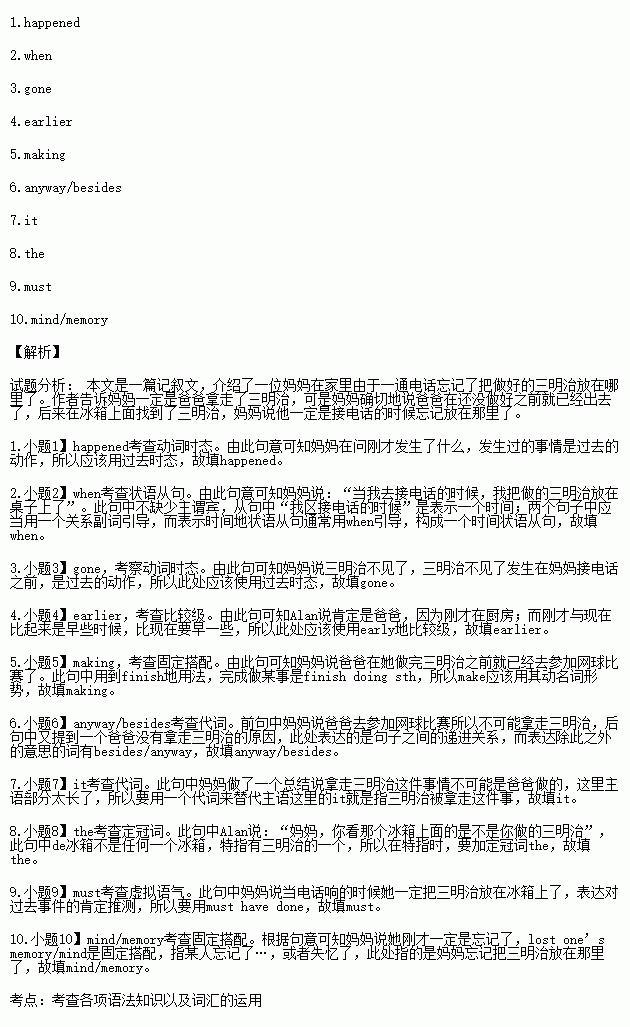题目内容
Mum (putting on her coat): I’m going to have to go down to the shop for more bread.
Alan: Why?
Mum: I’m not sure what 1. (happen). I made some sandwiches earlier and left them on the table 2. I went to answer the phone. But someone must have taken them because they are 3. (go).
Alan: Oh, it must have been Dad .I’m sure he was in the kitchen 4. (early).
Mum: No, he went off to his tennis match before I finished 5. (make) them, so he couldn’t have done it. 6. , he couldn’t carry a plate of sandwiches as well as all his tennis stuff, so I’m sure 7. wasn’t him.
Alan (opening fridge door): Well, it wasn’t me. But Mum, look! Are these your sandwiches here on the bottom shelf of 8. fridge?
Mum: Are they there? Oh, my goodness. I 9. have put them in there when the phone rang. Oh, dear. I really must be losing my 10. Now, why did I

